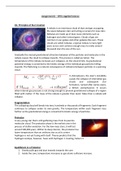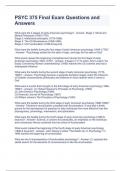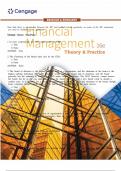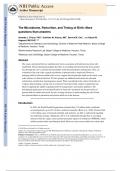Summary
Summary Unit 16 Assignment D
- Institution
- PEARSON (PEARSON)
Unit 16 Assignment D Overall Grade: Distinction Course Overall Grade: D*D Contains: Star creation, astrophysics, fragmentation, protostars, initial nuclear reactions, sequence stars, life cycle, spectral energy, core collapse, supernovae, neutron stars, black hole, magnitude, black body radi...
[Show more]








